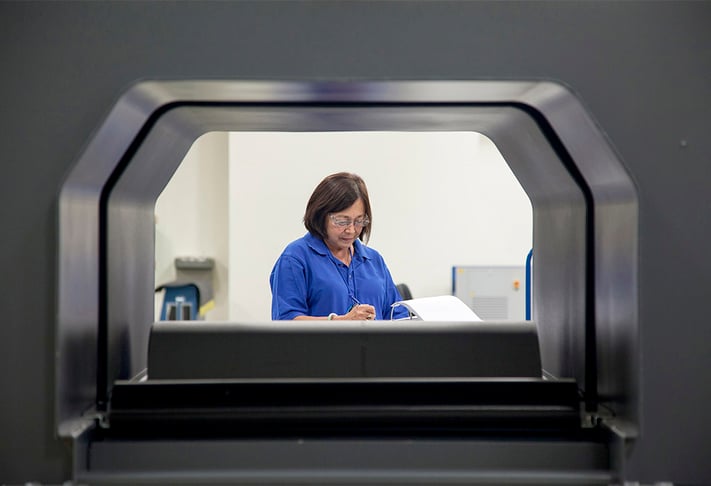
Reliability. Performance. Service capability.
These are the areas I advise customers to strongly evaluate as they upgrade their current explosives detection systems (EDS) from single or multi-view X-ray to computed tomography (CT) technology. Why? This is a costly, long-term investment in which making the right supplier choice is critical.
What helps in making an informed decision? First, customers need to figure out the difference between marketing positioning and field-tested results; between what is promised, and proven track records of success. One area this comes to life is in discussions about fixed versus rotating data acquisition CT EDS system (also referred to as fixed or rotating gantry).
Our own data, pulled from having more than 2,000 deployed CT EDS systems worldwide, suggests that the reliability of a well-designed X-ray system is actually independent of the gantry system moving or not. But to help ensure the best purchase decisions are being made, I wanted to share my thoughts.
One light source vs. many.
In rotating gantry CT EDS systems, like those we produce, spinning gantries rotate a single X-ray tube, detector arrays, and the power supplies around the object to produce the CT image. The X-ray tube is essentially a high-powered light bulb emitting photons as X-rays, rather than as visible light.
A fixed gantry CT EDS generates a fan beam of X-rays to create the CT imagery and uses approximately a dozen X-ray sources (“sparse view”) or a much more complicated X-ray source with hundreds or even thousands of source points (“many view”) to produce the CT image. This leads to what I see as the biggest problem with the fixed gantry systems: their design increases complexity and adds X-ray tubes in order to simulate what you can do by rotating a single X-ray tube. And, because it’s all built together, making changes or future upgrades is challenging.
The problem with X-ray tubes.
From an engineering perspective, the most troublesome aspects of any X-ray screening system is actually the X-ray tube itself. Not surprisingly, the components with the highest failure rates in a CT EDS system tend to be associated with X-rays (tubes, as well as the detectors and power supplies). Again, these failures are actually not caused by factors related to the gantry being fixed vs. rotating, but rather result from their high use during continuous screening operations that average twenty or more hours per day. This becomes a problem for fixed gantry systems as they rely on dozens and in some cases hundreds of tubes that could potentially fail versus a rotating system that relies on just one.
Predictive maintenance is key.
Both fixed and rotating gantry systems are highly complex units that over the course of their life spans will have parts that need to be replaced. System downtime happens, but it’s the unplanned downtime that’s the bigger problem. We had a customer where the CT EDS system had sensors in place that monitored the coolant temperature of the X-ray tube. Using analytics, we were able to predict when the tube was going to fail (as pre-set temperature limits triggered an alarm). A service ticket was issued, the repair and downtime planned, and the machine was soon back in service.
I use this example to highlight a critical aspect of system reliability: an ecosystem that supports monthly preventative maintenance, the ability to service in the field (without having to move the machine off-site) with spares on-site, and the availability of trained, experienced engineers.
In the end, the best way to make a decision is to go on-site and ask questions. Go to where the systems have been operational in a live environment over a period of time, then request the system’s data on performance, uptime, and failure points. Can the machines be serviced in the field? When a system goes down, how long will it be out of operation? Are spare parts available on-site or nearby? What is the response time for the supplier’s trained technicians and service personnel?
Once you’ve gathered all the information, you’ll be ready to make the best decision for your needs on a system that will last the next fifteen years or more.
For more on the benefits of Rotating Gantry systems in CT EDS,  of Samit and Cameron Ritchie, our Vice President, Engineering and Product Development & CIO.
of Samit and Cameron Ritchie, our Vice President, Engineering and Product Development & CIO.


